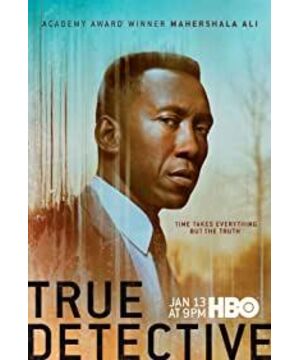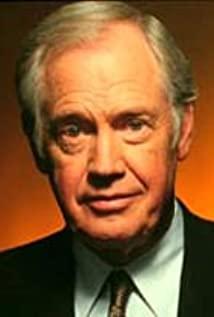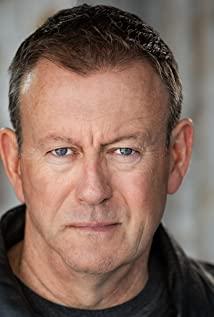At the end of the Irish writer James Joyce's collection of short stories "Dubliners"-"The Dead", a lot of tears poured into the eyes of the male protagonist Gabriel, "...he is fading into a gray Go inside the world; this solid world, the world that the dead once lived in, is dissolving and turning into nothing.” At the end of "True Detective", we saw a similar scene. Sturt shed tears for the first time. He cried to Marty: "In the darkness, I feel that my whole person is disappearing. Under the darkness, there is a deeper feeling, very warm, just like real The same. I know that my daughter is waiting for me there. It is very clear that I know it is her. I can still feel a little bit of my father’s presence. I am like being in the midst of all the people I have loved. The three of us are gradually disappearing. , And I just let go, and I did. I feel that my daughter’s love for me is stronger than before. There, only love surrounds me tightly." As Joyce said: "To me In terms of speaking, I always write about Dublin, because if I can enter the inner quality of Dublin, I can enter the inner quality of all cities in the world. "Similarly, "True Detective" also entered the place where the case occurred-Louisiana. Endoplasmic.
"True Detective" tells the story of the Louisiana police Luster and Marty since 1995. It took 17 years to detect the murder of a cult that specifically targeted women and children in their jurisdiction. In the past 17 years, the two have worked together and underwent a cold war, and finally they worked together to solve the case and became true friends. This police partner is a rare combination in film and television works. Luster is a maverick pessimist, full of puzzling philosophies, like Don Quixote, persisted in investigating one for nearly 20 years. Case; Marty is like Sancho Pansa, a kind-hearted layman, and a secular barrier to Raster, who always helps Raster deal with the interpersonal relations and daily affairs in the police station. Last is the warp and Marty is the weft. Through the journey of solving the crimes of the two people, the spiritual inner quality of Louisiana in the United States from 1995 to 2012 is outlined.
Everything is a story
, Nick Pizzolatto, the core character and creative person of "True Detective", said that the theme of the work is that as human beings, we are just a story between our own life and death. At the end of "True Detective", Luster also said that everything is a story, what we are telling is an ancient story, the story of the battle between light and darkness.
At the beginning of the play, a two-line narrative is adopted to review the case of Dora Lang's murder in 1995 through the perspectives of Luster and Marty respectively. In this way, the fact becomes a story from the narrator, which can be true or a lie. In the narrative, Luster and Marty respectively obscured some facts that should not be made public. When talking about their private lives, both of them lied again. The narratives of the two were edited in parallel to complement each other.
At the same time, Luster was also observing the direction of his story. The day when Dora Lang’s body was discovered in 1995 was the birthday of Luster’s deceased daughter; the criminal Ricky Ledoux adhered to the philosophy-time is a circle and we can’t solve anything, and Luster once said similar Words: There is another dimension beyond our dimension. People in that dimension are watching our dimension. Our dimension seems to be flat. In that dimension, time does not exist. At the end of the second episode, by the ruins of the church, the ring of birds seen by Luster is the shape of this philosophical concept, and in Kakoza, Luster really saw the legendary dark star. In the process of solving the case, this series of coincidences and information can explain why Raster is obsessed with this case: perhaps he thinks that only through this case can he penetrate into his spiritual inner quality. He faces a situation similar to Hamlet, and solving the crime or revenge has become a path close to his heart. Before the age of 17, he hadn't watched TV and often watched the stars in the sky to pass the time. After Kakoza saw the spiral dark star, his mental map was complete. Hamlet directed a "Mousetrap" to simulate his own situation, and Luster described his 17-year journey of solving crimes as a battle between light and darkness, so Luster had the same ironic spirit as Hamlet. However, "True Detective" absorbs a lot of the characteristics of tough guy movies. Luster is decisive and keen, avoiding the hesitant Hamlet tragedy, and through this ironic expression, it is relieved to a certain extent, and therefore it is Marty really reconciled and became friends.
Philosophy of Luster
In the process of solving the case, during the process of obtaining evidence from Pastor Sreiter, Luster referred to the rhetoric preached by the pastor as "story". Sritt later encountered a dilemma that often appeared in Bergman's movies-the silence of God. But here is not a problem in Rust. Pizzolatto used Nietzsche and Schopenhauer to refer to Rust in interviews. Nietzsche once said that all human perception and knowledge must be perspectiveist and unique to everyone. Therefore, the "story philosophy" that Luster believes in, and the vast majority of the play through the perspective of Luster and Marty, form an isomorphic relationship of narration.
Luster adheres to his own philosophy and solves cases like fish in water. He is known in the police circle for his extraordinary interrogation skills. Many colleagues ask him to help him because he can easily see their inner stories through the eyes of suspects. But he was also trapped by his own philosophy. As the case continued to deepen, he found that the time philosophy of the murderer Ricky Ledoux was similar to his own; he saw the relief of letting go in the eyes of all the victims, and finally He made the same choice when he was seriously injured, which pushed him to the timeless dimension where his daughter was. There, his hard heart was melted, and he felt his daughter's strong love again and was released. Therefore, Luster's 17-year journey to solve the case is even more a struggle of self.
The "Author" drama
"True Detective" is coordinated by the more common creatives in American dramas. The production methods of the scriptwriting and the director's diversity creation are different. The first season script is all written by the creative Pizzolatto and directed by Kerry Fukuyong. The overall style is more For unity, it can be called an "author" play.
Although there are 8 episodes in the first season, the overall rhythm is very accurate. Some commentaries said that the first episode was shot like David Fincher and the second episode was shot like Andrew Dominic. This really makes sense. At the end of episode 3, Luster said, like other dreams, there must be monsters at the end. At this time, "Light Pig" Ricky Ledoux's upgrade shots and scene scheduling are very similar to David Lynch's movies. At the end of episode 4, Luster captured the 6-minute long shot of Jin Ji, like a gorgeous exclamation mark, and made a brief summary of the case. And this sophisticated way of mirroring is rarely seen in contemporary movies. It is worth mentioning that there is also the Oscar "Xinke Actor" Matthew McConaughey who played Luster and the powerful actor Woody Harrison who played Marty. McConaughey's soothing coldness and Harrison's publicity are formed. Relaxed performance rhythm.
"True Detective" has a deep temperament of the American South. Time is an important proposition of this play. This is very common in the novels of Faulkner, the representative writer of the American South. Quentin in "The Sound and the Fury" is a home Pass the watch and go crazy. In response to this proposition, "True Detective" used many big scene shots to slow down the rhythm. Because of its inner rhythm and production method, "True Detective" deserves the title of "Selected Poems".
Originally published in "China Art News"
View more about True Detective reviews











